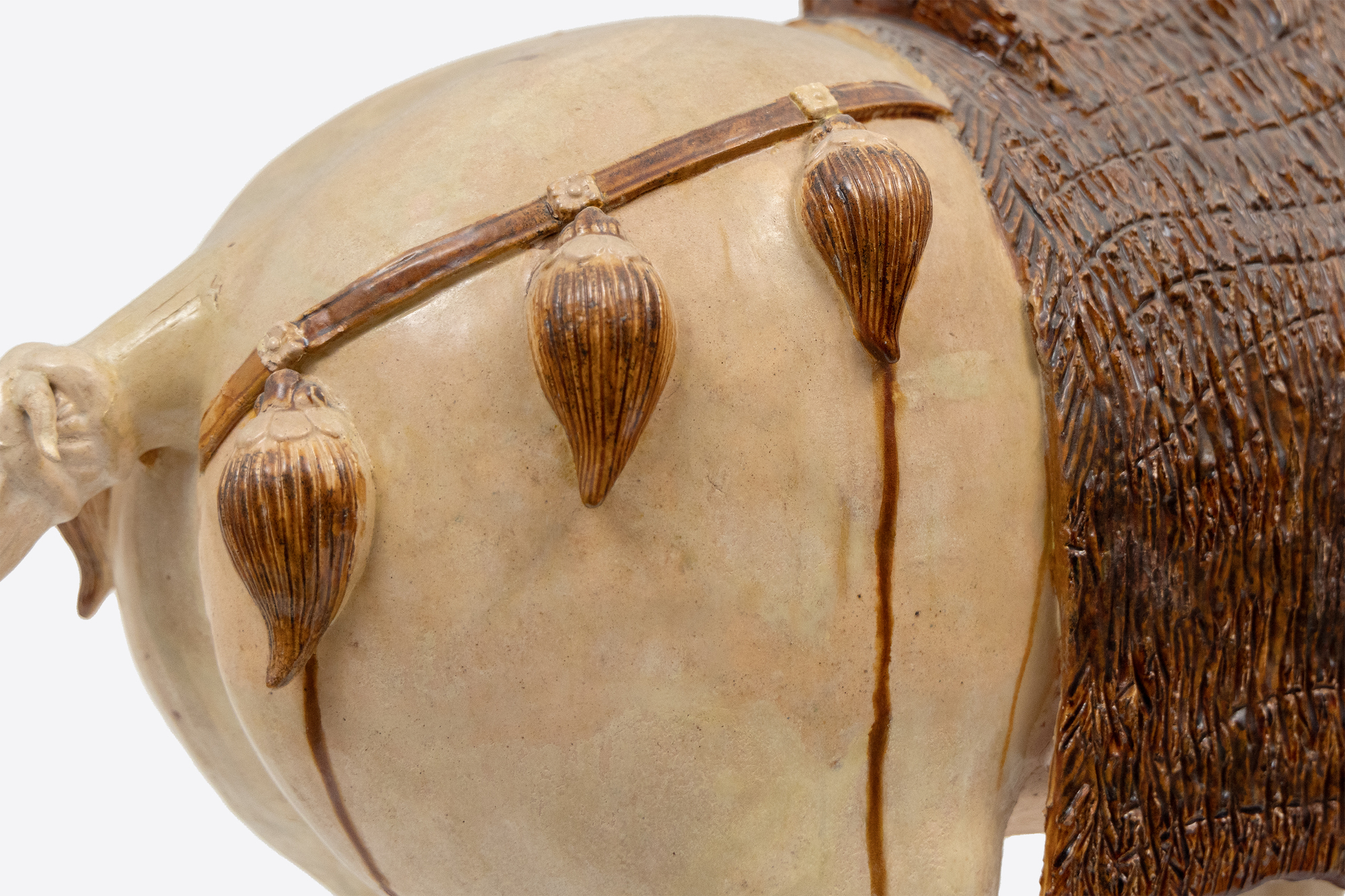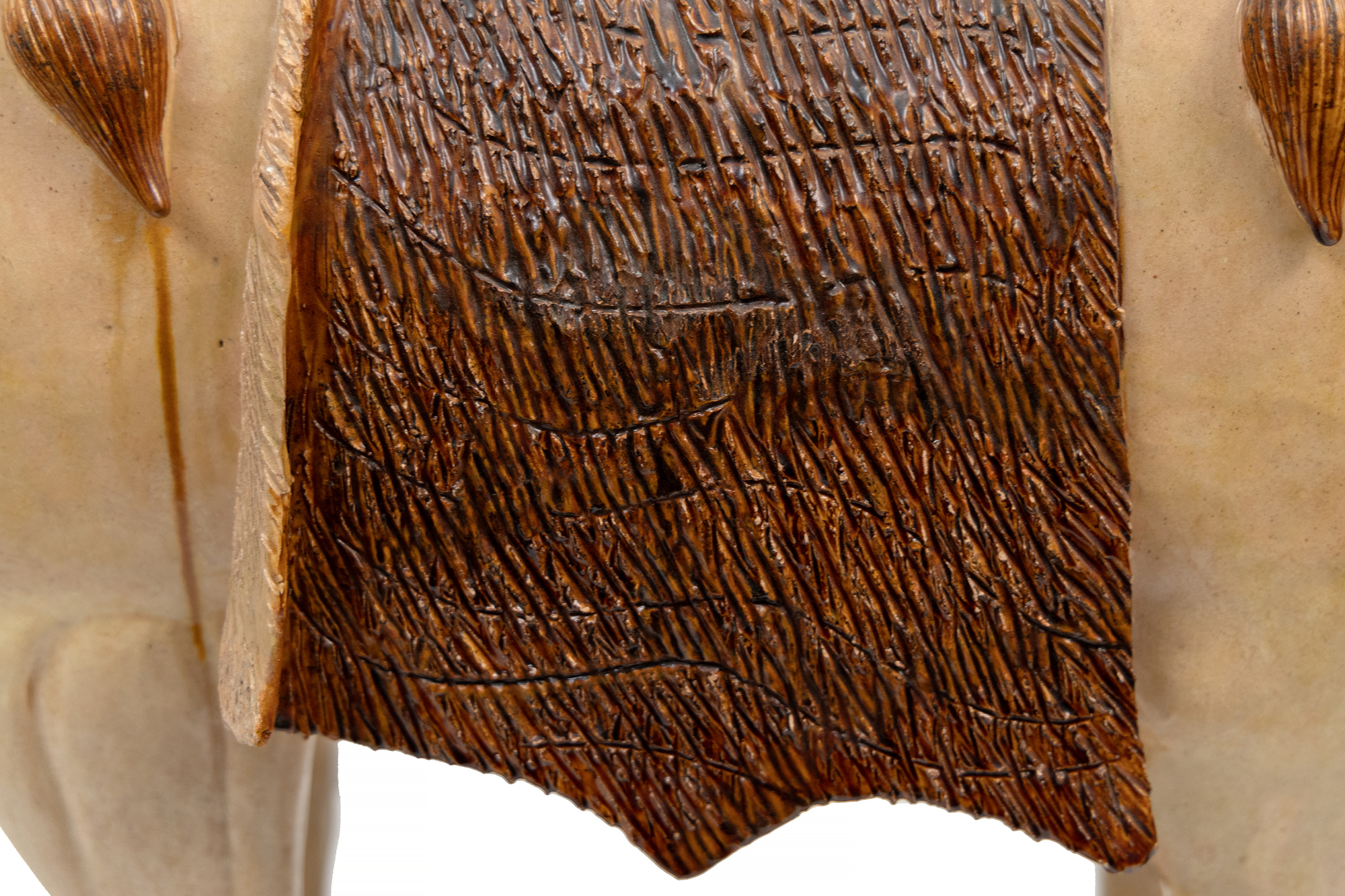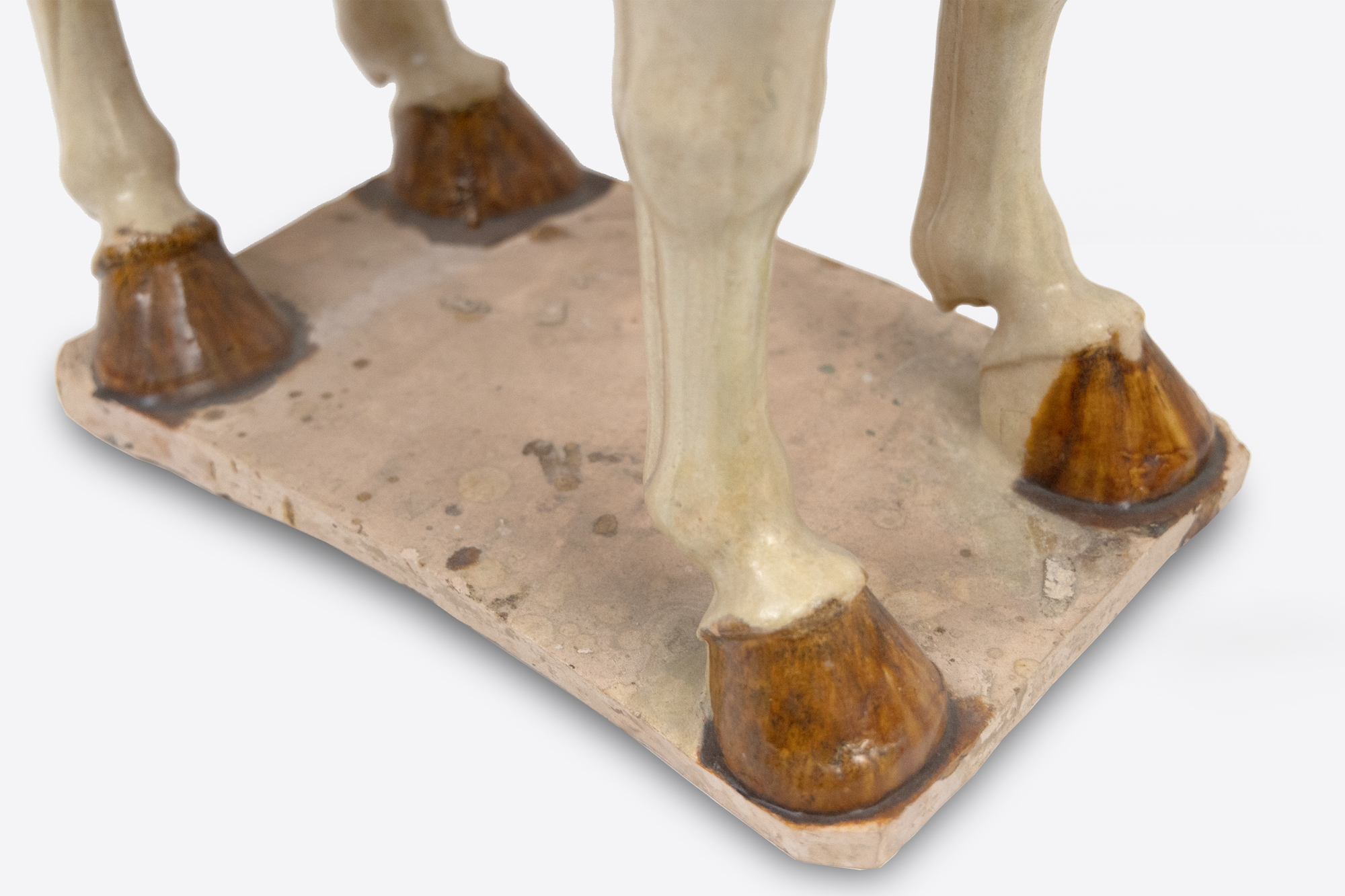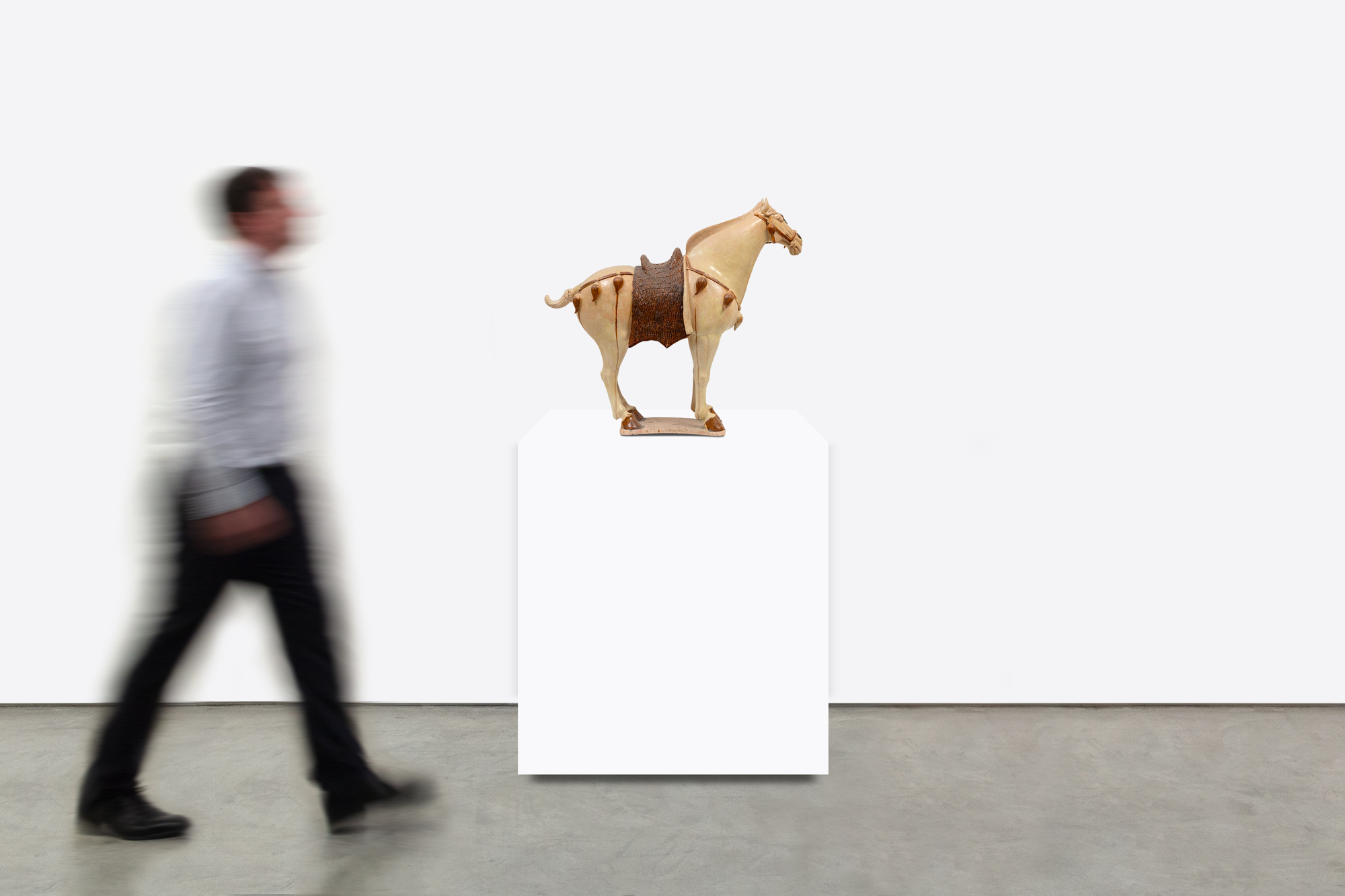CHINO







Procedencia
Colección Privada, CaliforniaSiguiendo la tradición de siglos, los ritos funerarios siguieron siendo muy importantes. Existía un departamento gubernamental independiente encargado de supervisar la fabricación de objetos funerarios. Oficialmente había límites en el número de ajuares funerarios y restricciones en el tamaño de los objetos que podían acompañar al difunto, según el rango: los funcionarios de mayor rango debían tener un máximo de 90 figurillas de no más de 30 cm de altura, mientras que a los miembros de la familia imperial se les permitían varios cientos de hasta un metro de altura. Sin embargo, estas normas se incumplían con frecuencia. Los familiares del difunto creían que podían mejorar el estatus de su antepasado en la otra vida proporcionando mingqi en exceso de lo necesario, asegurando así su propia buena fortuna. La cerámica figurativa de la dinastía Tang tiene características particulares. Las formas son animadas y reales, el tema abarca todos los aspectos de la vida social y ritual y la escala de las figuras era razonablemente pequeña, con la excepción de algunas magníficas obras de mayor tamaño encargadas para las tumbas de la élite. Las figuras de cortesanos y animadores, jugadores de polo y los exóticos viajeros que llegaban regularmente a las ciudades chinas con sus grandes camellos de carga se convirtieron en un lugar común, ilustrando el carácter cosmopolita de la época. La variedad de formas nos indica que los artesanos tenían margen para la innovación individual y que no estaban controlados por reglas relativas a estilos particulares. Los objetos funerarios no sólo hablaban de poder y fuerza militar, sino también de la sofisticación y los logros intelectuales del difunto.


